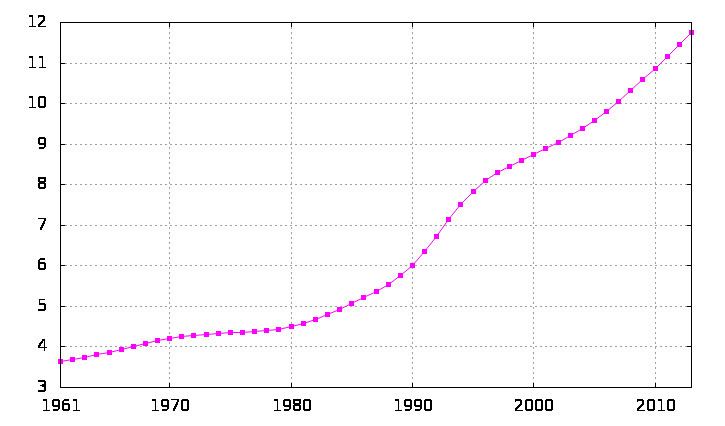 | ||
This article is about the demographic features of the population of Guinea, including population density, ethnicity, education level, health of the populace, economic status, religious affiliations and other aspects of the population.
Contents
- Map of Guinea
- Population
- Vital statistics
- Fertility and Births
- Ethnic groups
- CIA World Factbook demographic statistics
- Population growth rate
- Net migration rate
- Sex ratio
- Life expectancy at birth
- Nationality
- Religions
- Languages
- Literacy
- References
Map of Guinea
Demographics of Guinea describes the condition and overview of Guinea's peoples. Demographic topics include basic education, health, and population statistics as well as identified racial and religious affiliations.
Population
According to the 2010 revision of the World Population Prospects the total population was 9 982 000 in 2010, compared to only 3 094 000 in 1950. The proportion of children below the age of 15 in 2010 was 42.9%, 53.8% was between 15 and 65 years of age, while 3.3% was 65 years or older .
Vital statistics
Registration of vital events is in Guinea not complete. The Population Departement of the United Nations prepared the following estimates.
Fertility and Births
Total Fertility Rate (TFR) (Wanted Fertility Rate) and Crude Birth Rate (CBR):
Fertility data as of 2012 (DHS Program):
Ethnic groups
West Africans make up the largest non-Guinean population. Non-Africans total about 30,000 (mostly French, other Europeans, and Lebanese). Seven national languages are used extensively; the major written languages are French, Pular (English: Fula; French: Peul or Peuhl), and Arabic.
Other languages have established Latin orthographies that are used somewhat, notably for Susu and Maninka. The N'Ko alphabet is increasingly used on a grassroots level for the Maninka language.
CIA World Factbook demographic statistics
The following demographic statistics are from the CIA World Factbook, unless otherwise indicated.
Population
10,601,009 (July 2011 est.)
Population growth rate
2.645% (2011 est.)
Net migration rate
0 migrant(s)/1,000 population (2006 est.)
note as a result of conflict in neighboring countries, Guinea is host to approximately 141,500 refugees from Côte d'Ivoire, Liberia, and Sierra Leone (2006 est.)
Sex ratio
at birth 1.03 male(s)/female
under 15 years 1.02 male(s)/female
15-64 years 1 male(s)/female
65 years and over 0.78 male(s)/female
total population 1 male(s)/female (2011 est.)
Life expectancy at birth
total population 58.11 years
male 56.63 years
female 59.64 years (2011 est.)
Nationality
noun Guinean(s)
adjective Guinean
Ethnic groups
Religions
Languages
French (official), each ethnic group has its own language
Literacy
definition age 15 and over can read and write
total population 29.5%
male 42.6%
female 18.1% (2003 est.)
